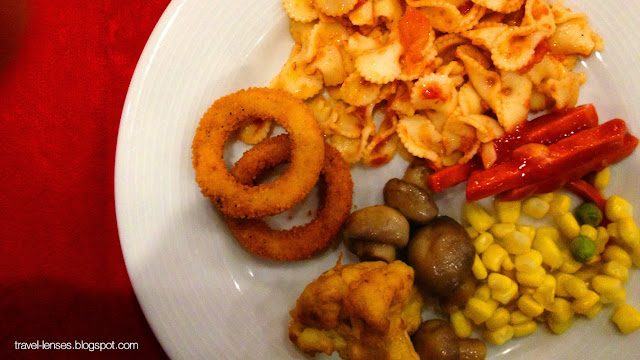[EU Holidays] Turkey Day 2 - Çanakkale
19 December 2013It was another 5.30 am wake-up call. But again the sleep deprivation was made up for with a good breakfast and some time after that to tour the peripherals of the hotel.
There is an enclosure in front of the hotel where many gorgeous deers and goats frolic in the chilly air.
About 100m down the road lies a beach. It was deserted that morning, which is not unexpected on a cold winter's morning.
Our first destination was to the ruins of Troy.
The ancient Greek city saw nine distinct settlements in its ~4000-year history, with each one built over the previous.
Scaling the hilly terrain, there were cross-sections of the layers of civilization demarcated by signages displaying Roman numerals I-IX.
The vast plains of Scamander come into view at the top of the climb.
The ancient walls are believed to be from Troy VII which is widely thought to be the period for the Trojan War.
We came across surviving mud brick walls which had a distinct hematite red-orange tint. During that period, houses were made from mud stones, which were clay mixed with mud, for they could keep the house cool during summer and warm during winter. Due to the lack of structural integrity, not many of these mud brick ruins remain.
Troy is well known to be the setting of the famous Trojan War.
In 30 words: soldiers hid in a giant wooden horse; horse presented to enemy as gift; enemy brings horse into their camp; soldiers come out in the night and wipe out the enemy.
At the entrance of Troy stands a cartoonish replica of the Trojan horse; perfectly lacquered and complete with windows as if it is not obvious enough that there are occupants in it.
Lunch @ Bergama restaurant was a buffet spread of Turkish dishes. Sadly, the combination of jet-lag, sleep deprivation and long coach rides had robbed me of my appetite. Plus the food wasn’t exactly appetizing.
Next stop was to another ancient Greek city of Pergamon.
According to the itinerary, we were supposed to ascend by cable car to the acropolis which boasts of attractions such as the temple of Trajan, Library of Pergamum, 10 000-seater Hellenistic theatre. Perched on a hill, slipping on the treacherous steep steps would lead to a fatal plunge.
But we didn't! According to the guide, there are no cable car services in winter which sounded pretty valid at that point in time. But a quick post-trip google proved otherwise. Even if it is true, I feel that customers should be informed of such major omissions before signing of the package.
We did however go to the Asclepion in the valleys of Pergamon. Named after the god of healing, Asclepius, the institution served as a medical center and psychiatric hospital.
We traced the footsteps of the sick, approaching Asclepion via the 800m Sacred Way. In the past, this colonnaded walkway served to sieve out those seriously ill who would be ironically rejected entry into the facility.
The ill were supposedly housed underground with a window overhead. The healers would converse with them from above through the opening and that led the ill to believe that they were talking to Asclepius.
The constant gentle trickle of water served the purpose of modern relaxing music to calm the wretched minds of the ill.
A broken column shows the relief of snakes coiled around leaves of an olive branch which evolved to the emblem of modern medicine.
Asclepion is often thought to be more of an ancient health spa rather than a hospital. It is not hard to see why from the impressive Roman theater and sacred pools. However, the trickle of water a rusty pipe into a marble sink looks uncannily like a Roman designer urinal.
It took another long coach ride before we reached Tatlises Hotel in Kusadasi.
Travel Tips
[Pergamon] If you are visiting Turkey in winter, do question the agency if they will proceed with the ascent to the acropolis via cable car.



















































































1 comments
Great post. This is really good. Thanks for sharing this information. Keep sharing.
ReplyDeleteCheap Holidays to Turkey 2023